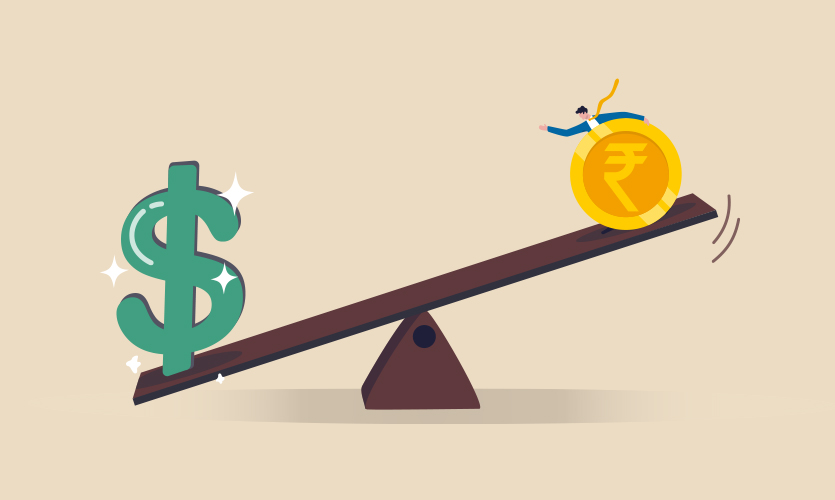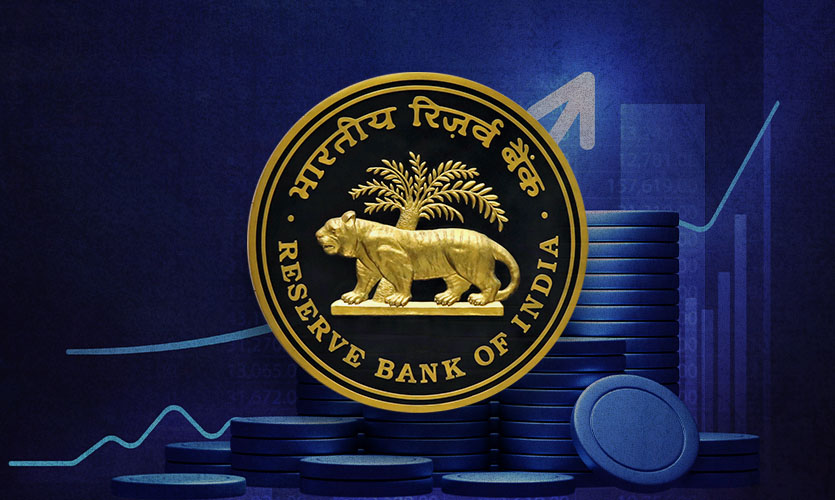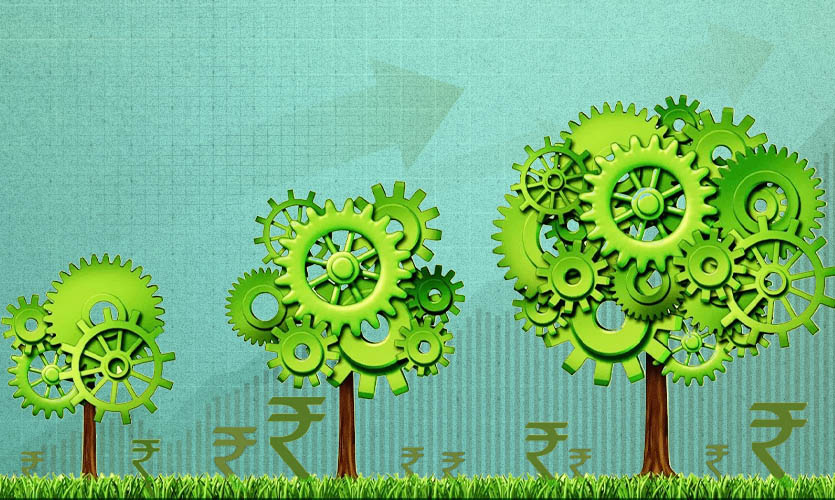The dollar-to-rupee exchange rate has reached 80 for the first time, and is shortly anticipated to reach 81. The currency has been impacted by the nation’s record-high foreign equity outflows of about $30 billion so far this year, along with fears about a widening current account deficit in the face of high oil and commodities prices. The rupee used to trade at around 70 to the dollar in the past, but persistent currency erosion has been observed recently. Monday’s exchange rate of 79.88 Indian rupees to one dollar was lower than the anticipated 80 rupees, however, Tuesday’s events progressed exactly as anticipated. According to experts, the value of $1 USD will soon surpass Rs 80. Since the beginning of the Russia-Ukraine conflict, the rupee has reached a new low 26 times.
Effect On Import And Export
The importers previously exchanged dollars for rupees, therefore, importers suffer a significant loss if the currency declines. If $1 is equivalent to Rs 70, for example, it implies that if importers need to purchase a commodity for $1, they must pay Rs 70 for it. However, if $1 is equal to Rs 80, the importer will be required to pay Rs 80. As a result, importers experience losses and rising costs.
On the other hand, exporters benefited from the currency depreciation. This indicates that if they sell their items worth $1 at Rs 70 rupees, the exporter will receive a profit of Rs 70. This suggests that when the value of the currency declines, exporters benefit more. Likewise, when the currency declines, inflation rises. Furthermore, export prices rise as the value of the currency drops. As a result, consumers must pay more for the same commodities.
Effect On Stock Market
When a person makes an investment in a stock market, they first examine that market in light of the present market conditions. Consider an investor who wants to make an investment in the current market environment of currency depreciation. In such circumstances, investors ought to favour the kinds of businesses that specialise in exporting, especially on a large scale, from which they reap significant profit margins.
Current Account Deficit (CAD)
The sum of all commodities and service exports and imports on the world market is known as the current account deficit (CAD). In India, imports outnumber exports, and its current account imbalance continues to widen as imports rise. We can also observe from the news that in June, the trade imbalance was $26 billion USD. The current fiscal year’s anticipated growth in the current account deficit of $105 billion USD will set a new historical record.
RBI’s Intervention
There have been many steps taken by the Reserve Bank of India (RBI), to remedy this critical situation. In order to maintain a balanced economy, the RBI takes several essential measures. It releases dollars in the market to increase supply whenever such a situation occurs in the economy. The supply of any commodity decreases when the demand decreases, and the price falls as a result. Likewise, as dollars’ supply increases, their price also decreases. This measure restores the balance of the Indian economy by appreciating the Indian rupee.
This measure has the disadvantage of causing the RBI’s reserves to decrease when it releases dollars in the market. In consequence, forex reserves are now declining continuously. It has dropped from $642 billion USD, to $592 billion USD.
Indian rupees have also been internationalised by the RBI. This will decrease the demand for dollars since transactions can now be conducted in rupees. This will further lead to a fall in the price of the USD as demand for the rupee falls.
In response to this adverse condition, the Opposition has criticised the government. Presidential candidate Yashwant Sinha has sought an answer, while Congress party leaders have criticised the Modi government. In addition, Randeep Surjewala stated that the rupee had crossed the “margdarshak mandal”.
There is a possibility that the rupee will depreciate further. All of the world’s currencies are declining as a result of the Russia-Ukraine conflict. In reality, the status of foreign currencies is far worse than that of the Indian rupee. Comparatively speaking to other global currencies, the Indian rupee is doing well. Despite its decline, the Indian rupee remains one of Asia’s best-performing and most stable currencies. However, it is likely to hit 81 shortly.
The government has increased interest rates under its monetary policies, resulting in a better rate of return for investors. This is one of the reasons why investors are getting better returns from the US than from India.
According to the Bureau of Labor Statistics, the United States’ inflation rate rose by 9.1 percent on June 13. The Fed will have to raise rates once more as a result of this spike in inflation. Rates are anticipated to be aggressively increased by 100 basis points by the Federal Reserve. Therefore, it is likely that when rates rise, the Indian rupee would be affected, which will prevent the flow of dollars.
Additionally, analysts described how the Indian economy is suffering from borrowed inflation. The Russia-Ukraine conflict is having a significant impact on global inflation, which is causing currency devaluation in most nations. India will experience the effects of the same, notwithstanding its preventative steps.
Read more: India Should Decrease Edible Oil Imports To Become Self-Reliant










